Archive for the ‘Articles’ Category
Marine Surveyors
March 2, 2014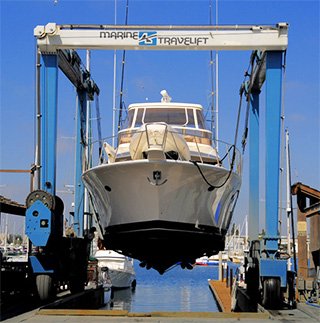 Surveying is one of the most important processes of buying a trawler. When buying a trawler you are responsible for the survey, hauling out and cleaning the bottom. All together your looking at about $30.00 to $50.00 per foot. It is the best investment you will make. No one has a crystal ball except your surveyor, he will roll up his sleeves and survey and sea trial your boat, it normally takes 6 to 8 hours.
Surveying is one of the most important processes of buying a trawler. When buying a trawler you are responsible for the survey, hauling out and cleaning the bottom. All together your looking at about $30.00 to $50.00 per foot. It is the best investment you will make. No one has a crystal ball except your surveyor, he will roll up his sleeves and survey and sea trial your boat, it normally takes 6 to 8 hours.
Find and pick your own surveyor if you are buying from a broker or a boat dealership, never take a recommendation on the sellers surveyor, no matter how good he may be. This is a conflict of interest, take no part of it. Just google the marine surveyors in the area where you are buying your vessel. Talk to a few and pick the one you like the best.
Your surveyor will have enough knowledge to do a general engine survey. First he will start the engine, if it starts right up you have good compression, he will then check the smoke out of your rear exhaust and wait a couple of minutes to see if she clears up. Always have him do an oil analysis on your engine, generator and transmission. He will check your engine under sea trial with a heat gun and check your rpm’s with the speed your trawler is doing. If anything is wrong he will recommend an engine surveyor and that will run about $1,500.00 to $2,000.00. You may want to walk away or tell your broker the seller must pay for this if he wants the sale to continue, or you can pay for it.
When making an offer on your trawler you must keep $5,000.00 cash in your pocket for repairs after the survey. You will have a list of around 50 deficiencies to take care of. Please remember you are buying a used boat! If it comes up with 75 deficiencies or is over $7,000.00 you may want to walk away. Anything over $3,000.00 needs to be addressed. I would have the seller repair and prove the item in question. Deal breakers would be a complete blister job, soft and spongy decks or replacements on a teak deck, these are just a few timely & costly repairs.
At the end of the survey your surveyor will pull you aside in private and go over his findings. You should know if the trawler is ok. He will email you your survey in about 48 hours. Sit down with your broker and go over the deficiencies. At this time he may suggest someone to work on the boat at a more reasonable price than a marine repair yard. You must either sign an accented or rejection letter within 24 to 48 hours after your surveyor checks your contract. If not addressed, it would be construed as an acceptance and now your deposit is at risk.
Never survey a trawler out of the water, if it has blisters they will be dried up. Put it in the water for a day or two and have it hauled. Do not dive under the boat to look at blisters, haul the boat out. Never buy a used survey from a broker at a big discount even if it was done yesterday. Have your own done and be on board.
This article is just to help you along with surveying your trawler. The prices quoted are just that, you may want to do things differently.
I have written many blogs, you can find them on my site. If your looking to buy a trawler or want to try ours for a few days more information can be found on www.trawlerschoolcharters.com.
Thank you,
Captain Bob
Trawler Sales Contract and the Art of Negotiation
February 12, 2014A sales contract is an offer to purchase, in writing and conducted between the minds of the buying and selling party. Normally this is where negotiation’s start, the buyer makes an offer and the seller counteroffers, this will go back and forth until an agreement is met. The contract is signed and bound. In the Yacht brokerage business, a 10% deposit is normally required.
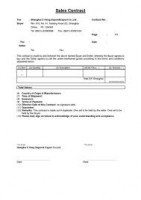 If the buyer is buying private or thru a broker, your best way to negotiate would be to put yourself in a strong position, this could result in a better purchase price. Start off with a good offer that depends on the market value and the condition of the Yacht. It was my experience that 10% of the asking price was a good outcome under the conditions I just mentioned. Beware: if you really lowball the seller he could become insulted and become harder to work with, make sure to leave room on your first offer to negotiate. Please make sure you have $5,000 in your pocket for repairs after your survey is completed, you will have a list of deficiencies you must address. Please note, you are buying a used boat and there will be many small issues to deal with.
If the buyer is buying private or thru a broker, your best way to negotiate would be to put yourself in a strong position, this could result in a better purchase price. Start off with a good offer that depends on the market value and the condition of the Yacht. It was my experience that 10% of the asking price was a good outcome under the conditions I just mentioned. Beware: if you really lowball the seller he could become insulted and become harder to work with, make sure to leave room on your first offer to negotiate. Please make sure you have $5,000 in your pocket for repairs after your survey is completed, you will have a list of deficiencies you must address. Please note, you are buying a used boat and there will be many small issues to deal with.
Ok, let’s make a deal! I would use the following conditions for ammunition to soften up the seller so he takes you serious and not just another tire kicker. First you must have a 10% deposit and contract filled out with an offering price, no seller will entertain an offer verbally, he will once again think of you as a tire kicker trying to get to his bottom line. You will survey his boat within a week and close within 2 weeks. This will show the seller that this is a clean quick deal and his boat will not be off the market for a long period of time. Having cash or financing set up would also be of value, this could end up saving you thousands of dollars on his counter offer.
Once the contract is signed by both parties your next step will be to survey the boat. Good luck!
This article was written by Captain Bob Hamilton, owner operator of Trawler School Charters.
For more information and articles go to www.trawlerschoolcharters.com.
Trawler Towing Insurance – “A horrible ordeal turned into a wonderful ending”.
February 11, 2014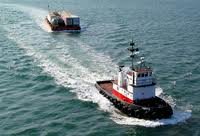 If ever you were to spend money on your boat it would be a very important decision to buy Towing protection insurance. After writing the diesel engine blogs on trawlerschoolcharters.com site I felt compelled to address the towing issue. Without the right coverage, a tow on the water could set you back thousands and I mean thousands of dollars out of pocket for just a short tow.
If ever you were to spend money on your boat it would be a very important decision to buy Towing protection insurance. After writing the diesel engine blogs on trawlerschoolcharters.com site I felt compelled to address the towing issue. Without the right coverage, a tow on the water could set you back thousands and I mean thousands of dollars out of pocket for just a short tow.
Trawler Towing insurance is to help ease the stress, aggravation and out of pocket expense related to breakdowns, soft-groundings, fuel delivery, jump starts… while at the same time paying compensation to towing companies.
Commercial companies charge over $250.00 per hour for travel and (tow time) with additional charges for night time and bad weather. They may also charge $20.00 plus per foot of a vessels length for soft- groundings hard-grounding & salvage… Running time will also be billed for cancelled calls.
There are two types of towing insurance to buy, one being on your Yacht Insurance Policy and the other an inexpensive towing card like Boat US.
Why do you need Yacht Insurance Policy coverage above and beyond coverage from an inexpensive boat towing card like Boat US? Tow boats and other company’s like them do not cover hard-groundings & salvage. A hard grounding is when a second tow boat must assist, now more equipment is needed to free your boat, this is where your yacht policy will come into play and handle your claim. Another feature is your coverage will be extended to any coverage your policy provides for. you must find out if your policy will pay your towing bill up front or will you need to pay first and be refunded later (this could become a huge bill), you must have the cash or credit card to cover the tow. One more thing I would check on, make sure your policy covers salvage up to full value of your boat and not a percentage of your boat’s value.
You can buy inexpensive towing insurance coverage from outside company’s such as Boat US from West Marine. They offer on the water towing service by the nations largest towing fleet members and have unparalleled service at a competitive price in the US, Canada & Mexico 24/7 including water towing, fuel delivery, jump starts & soft groundings and 100% coverage for home dock tows.
I personally have both towing coverage’s and sleep very well at night with no worries while underway.
I hope this article was helpful, we teach this and a lot more at Trawler School Charters.
For more information, pictures and reviews visit our website at www.trawlerschoolcharters.com.
Become a trawler scholar.
Captain Bob Hamilton
Trawler School Charters Review
January 3, 2014I got a nice YouTube Video Trawler School Charters review that I wanted to share with you today. Click the play button below to watch this Trawler School Charters review:
Enjoy!
Captain Bob
Trawler School Charters
Fuel Contamination and Owning a Trawler Boat – What You Should Know
December 29, 2013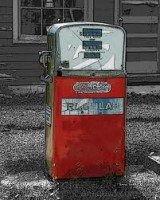 After reading an article single vs twin a couple decades ago it predicted that 90% of all engine breakdowns are due to fuel contamination. Wow, that got my attention, Owning Trawler School Charters equipped with a single engine was going to be a problem, so I thought. If ever read an article that got to me it was that one, all I thought about was breaking down all the time because of the 90% fuel contamination rule.
After reading an article single vs twin a couple decades ago it predicted that 90% of all engine breakdowns are due to fuel contamination. Wow, that got my attention, Owning Trawler School Charters equipped with a single engine was going to be a problem, so I thought. If ever read an article that got to me it was that one, all I thought about was breaking down all the time because of the 90% fuel contamination rule.Captain Robert L. Hamilton
USCG Licenced
Vessel Miami Mermaid
398 East Dania Beach Blvd #281
Dania Beach FL 33004
954-649-9611
trawlerschool@gmail.com
www.trawlerschoolcharters.com
Single vs Twin Trawler Engine – The Great Debate!
December 29, 2013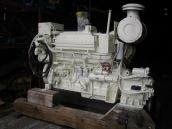 . Now that I have over eight years experience giving engine classes, I am ready to address this subject. Years ago I read an article Single vs Twin and I was disillusioned for years. It really hit me hard. When it was time to buy my Trawler I wanted a twin mainly because I am running a Trawler school 3 days 4 nights I wanted the reassurance of the back up twin engine setup. I had to settle for a single.
. Now that I have over eight years experience giving engine classes, I am ready to address this subject. Years ago I read an article Single vs Twin and I was disillusioned for years. It really hit me hard. When it was time to buy my Trawler I wanted a twin mainly because I am running a Trawler school 3 days 4 nights I wanted the reassurance of the back up twin engine setup. I had to settle for a single.Captain Robert L. Hamilton
USCG Licenced
Vessel Miami Mermaid
398 East Dania Beach Blvd #281
Dania Beach FL 33004
954-649-9611
trawlerschool@gmail.com
www.trawlerschoolcharters.com
Understanding Your Trawler Diesel Engine
December 16, 2013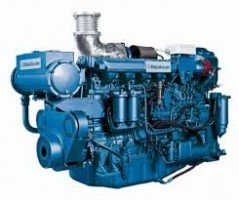 Trawler School Charters – This blog is about understanding your Diesel engine.
Trawler School Charters – This blog is about understanding your Diesel engine.
Captain Robert L. Hamilton
USCG Licenced
Vessel Miami Mermaid
398 East Dania Beach Blvd #281
Dania Beach FL 33004
954-649-9611
trawlerschool@gmail.com
www.trawlerschoolcharters.com
Turbo Charged or Naturally Aspirated Diesel Engine – Trawler School Charters
December 16, 2013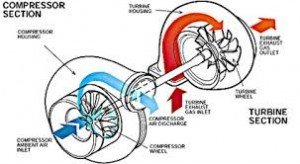 In this latest post on the Trawler School Charters Blog we are talking about Engines. There is a difference when choosing a Diesel engine, they are either turbo charged or naturally aspirated.
In this latest post on the Trawler School Charters Blog we are talking about Engines. There is a difference when choosing a Diesel engine, they are either turbo charged or naturally aspirated.Captain Robert L. Hamilton
USCG Licenced
Vessel Miami Mermaid
398 East Dania Beach Blvd #281
Dania Beach FL 33004
954-649-9611
Sundeck Model Trawler
October 8, 2013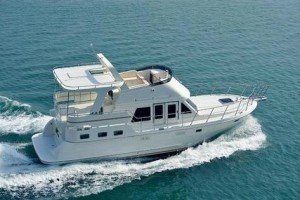 There are four types of trawlers; Sundeck, Trunk, Sedan & Pilothouse. Sundeck models are relatively new models built around 1985 to present. Normally the Sundeck has 7 – 8 knot hull speed and built on a semi-displacement hull. Some trawlers equipped with larger turbo charged engines can obtain higher speeds with the semi displacement hull compared to a full displacement hull found on pilothouse trawlers which cannot go over 8 knots.
There are four types of trawlers; Sundeck, Trunk, Sedan & Pilothouse. Sundeck models are relatively new models built around 1985 to present. Normally the Sundeck has 7 – 8 knot hull speed and built on a semi-displacement hull. Some trawlers equipped with larger turbo charged engines can obtain higher speeds with the semi displacement hull compared to a full displacement hull found on pilothouse trawlers which cannot go over 8 knots.Captain Robert L. Hamilton
USCG Licenced
Vessel Miami Mermaid
398 East Dania Beach Blvd #281
Dania Beach FL 33004
954-649-9611
trawlerschool@gmail.com
www.trawlerschoolcharters.com
Sedan Trawler
October 8, 2013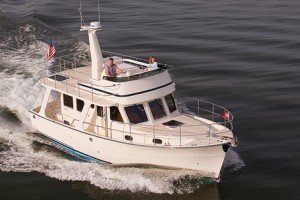 There are four types of trawlers: Sedan, Trunk, Sundeck and Pilothouse. Sedan models are sensible and conservative, they have a striking profile and a user-friendly layout. Built on a semi-displacement hull, the Sedan is a favorite among trawler enthusiasts. Owners enjoy the practicality and all around convenience this model has to offer and are willing to give up their aft master stateroom for the convenience of this floor plan.
There are four types of trawlers: Sedan, Trunk, Sundeck and Pilothouse. Sedan models are sensible and conservative, they have a striking profile and a user-friendly layout. Built on a semi-displacement hull, the Sedan is a favorite among trawler enthusiasts. Owners enjoy the practicality and all around convenience this model has to offer and are willing to give up their aft master stateroom for the convenience of this floor plan.
The Sedan floor plan accommodations are plain and simple, leading from the aft cockpit through the salon access door with the galley up and helm down. Just two steps to negotiate into the forward staterooms. This model is ideal for those having loss of motion, arthritis, hip or knee replacements. If this sounds like you, then look no more, this is the trawler for you. The two staterooms are up front and separated by a thin wall which compromises a little of your privacy and there is only one bathroom which is located next to the staterooms on sizes under 46′. This is a trade-off most experienced seafarers will surely go with.
All hands on deck! A full walk around, 360 degree deck all the same level provide the convenience of moving around safety and quickly, facilitating the handling of the dock lines with ease and the most pet friendly trawler made. Since the cockpit is located low to the waterline all-around water activities can be enjoyed by all.
Two types of sedan models were built: the original sedan, hull style, features an upright boxy appearance. The second, a very handsome trawler called the Europa Sedan. Her attractive outside lines has bridge overhangs with stylish support columns. This feature provides shaded side decks and rain protection. All other aspects of the Sedan trawlers are exactly the same.
You should know all there is to know about the four different trawler models before buying. It would be a wise choice to attend a trawler school.
Captain Robert L. Hamilton
USCG Licenced
Vessel Miami Mermaid
398 East Dania Beach Blvd #281
Dania Beach FL 33004
954-649-9611
www.trawlerschoolcharters.com